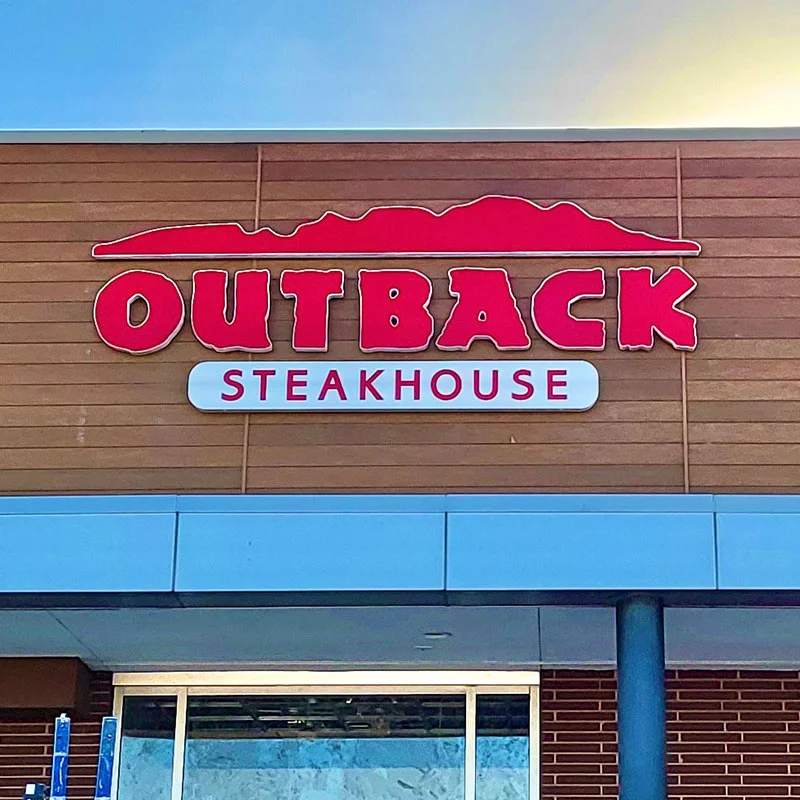Outback Steakhouse Closures: The Financials Behind the Shutdown and Which Locations Are Gone
Bloomin' Brands' Restaurant Closures: A Look Past the PR
Corporate press releases are a fascinating genre of fiction. They exist in a world where every strategic retreat is a "turnaround," every cost-cutting measure is an "investment in the core business," and bad news is always cushioned by a quote about "great momentum." The recent announcement from Bloomin' Brands, the parent company of Outback Steakhouse and Carrabba's, is a masterclass in this art form.
On the surface, the numbers are straightforward. The company has closed 21 restaurants and will not be renewing the leases on 22 others. Yet, in the same breath, CEO Mike Spanos tells us that "All four brands drove positive comparable store sales growth for the first time since Q1 2023." It’s a classic case of cognitive dissonance engineered for investors. You can almost picture the scene: a half-empty dining room on a Tuesday night, the faint smell of steak and anxiety in the air, while a manager in a back office tries to reconcile glowing corporate memos with the grim reality of the nightly receipts.
The statement is designed to be calming, but the actions are anything but. The real story isn't the carefully curated "positive growth" metric; it's the 43 locations being jettisoned from the portfolio and, more importantly, the suspension of the company's dividend. When a company stops paying its shareholders, it’s not a sign of "great momentum." It's a distress signal.
The Anatomy of a Defensive Play
Let’s deconstruct the official narrative. The company is framing this as a "turnaround strategy" focused on Outback Steakhouse. The plan involves reallocating "available free cash flow into strategic investments" and paying down debt. This is textbook language for "we are running low on cash." Suspending a dividend is one of the last levers a board wants to pull. It spooks the market and signals a fundamental belief that the capital is better used plugging holes in the ship than rewarding the people who own it.
The claim of "positive comparable store sales growth" is where the statistical sleight-of-hand comes in. This metric is useful, but it can also be misleading. It measures sales at stores that have been open for at least a year (a definition that conveniently excludes the performance of struggling new locations or the drag from those just closed). Positive growth could mean an increase of 5%, or it could mean an increase of 0.1%. Without the specific figure, the statement is functionally meaningless. Was this growth enough to outpace inflation? Did it offset rising food and labor costs?

The 43 closures represent a small fraction of the company's total footprint—about 3.9%, to be more precise, of their Outback, Carrabba's, and Bonefish Grill locations combined. This isn't a catastrophic collapse, but rather a calculated pruning of the most diseased branches. I've analyzed dozens of these corporate restructuring announcements, and the refusal to provide a simple list of closures is a classic move to control the narrative and prevent localized panic. It’s efficient, but it’s also telling. It transforms a series of local business failures into a single, abstract national strategy.
A Deliberate Information Vacuum
The lack of transparency is the most frustrating part of this for anyone trying to conduct a clear-eyed analysis. Bloomin' Brands hasn't released a list of the shuttered restaurants. For residents in states like Michigan, which hosts dozens of their locations across all four brands, it creates a fog of uncertainty, prompting local outlets to ask, Outback, Carrabba's owner closing restaurants. Are any in Michigan? The company isn't saying.
This withholding of information is a strategic choice. Releasing a "hit list" of 43 specific addresses would trigger a cascade of negative local news stories, demoralize staff at those locations, and likely accelerate their decline. By keeping the details vague, Bloomin' Brands contains the damage to a single, national news cycle. It’s a maneuver that treats its restaurants not as community staples, but as interchangeable nodes on a spreadsheet.
This strategy is like a ship's captain announcing they're jettisoning cargo to stay afloat but refusing to say what, exactly, is being thrown overboard. Is it just excess weight, or is it the drinking water? The ambiguity itself becomes the story. What are the specific criteria for closure? Are they targeting locations in markets with declining demographics, or are these stores that have failed to adapt to delivery-first consumer habits? Is this a real estate problem or a management problem? The silence on these questions is deafening and suggests the answers might not fit neatly into the "turnaround" narrative.
The Signal in the Noise
Let's be clear. This is not a story of a company investing from a position of strength. This is a story of a company in a defensive crouch, conserving cash and shedding dead weight to survive in an incredibly difficult casual dining market. The positive spin from the CEO is noise; the dividend suspension and the 43 closures are the signal. Bloomin' Brands is battening down the hatches, and the decision to sacrifice shareholder payouts for debt reduction and "strategic investments" tells you everything you need to know about their internal forecast for the coming years. They are preparing for a long storm, not a victory lap.
-

Warren Buffett's OXY Stock Play: The Latest Drama, Buffett's Angle, and Why You Shouldn't Believe the Hype
Solet'sgetthisstraight.Occide...
-

The Business of Plasma Donation: How the Process Works and Who the Key Players Are
Theterm"plasma"suffersfromas...
-

The Great Up-Leveling: What's Happening Now and How We Step Up
Haveyoueverfeltlikeyou'redri...
-

NJ's ANCHOR Program: A Blueprint for Tax Relief, Your 2024 Payment, and What Comes Next
NewJersey'sANCHORProgramIsn't...
-

The Future of Auto Parts: How to Find Any Part Instantly and What Comes Next
Walkintoany`autoparts`store—a...
- Search
- Recently Published
-
- Stock Market 'News': Today's US Market Spin and the 'Live' Updates
- IRS Direct Deposit Relief Payments: What This Breakthrough Means for Your Financial Prosperity
- Bilbao: What the Data Reveals
- Outback Steakhouse Closures: The Financials Behind the Shutdown and Which Locations Are Gone
- The Burger Bubble Just Popped: Why Your Go-To Spot is Next on the Chopping Block
- The Bio-Hacked Human: What the New Science of the Core Reveals About Our Future
- Ore: What It Is and Why It Matters
- Firo: What is it?
- Avelo Airlines: FAA Cuts and the Lakeland Linder Opportunity
- Rocket Launch Today: What Happened and the Mystery Fireball
- Tag list
-
- Blockchain (11)
- Decentralization (5)
- Smart Contracts (4)
- Cryptocurrency (26)
- DeFi (5)
- Bitcoin (29)
- Trump (5)
- Ethereum (8)
- Pudgy Penguins (5)
- NFT (5)
- Solana (5)
- cryptocurrency (6)
- XRP (3)
- Airdrop (3)
- MicroStrategy (3)
- Stablecoin (3)
- Digital Assets (3)
- PENGU (3)
- Plasma (5)
- Zcash (6)
- Aster (4)
- investment advisor (4)
- crypto exchange binance (3)
- bitcoin price (3)
- SX Network (3)
